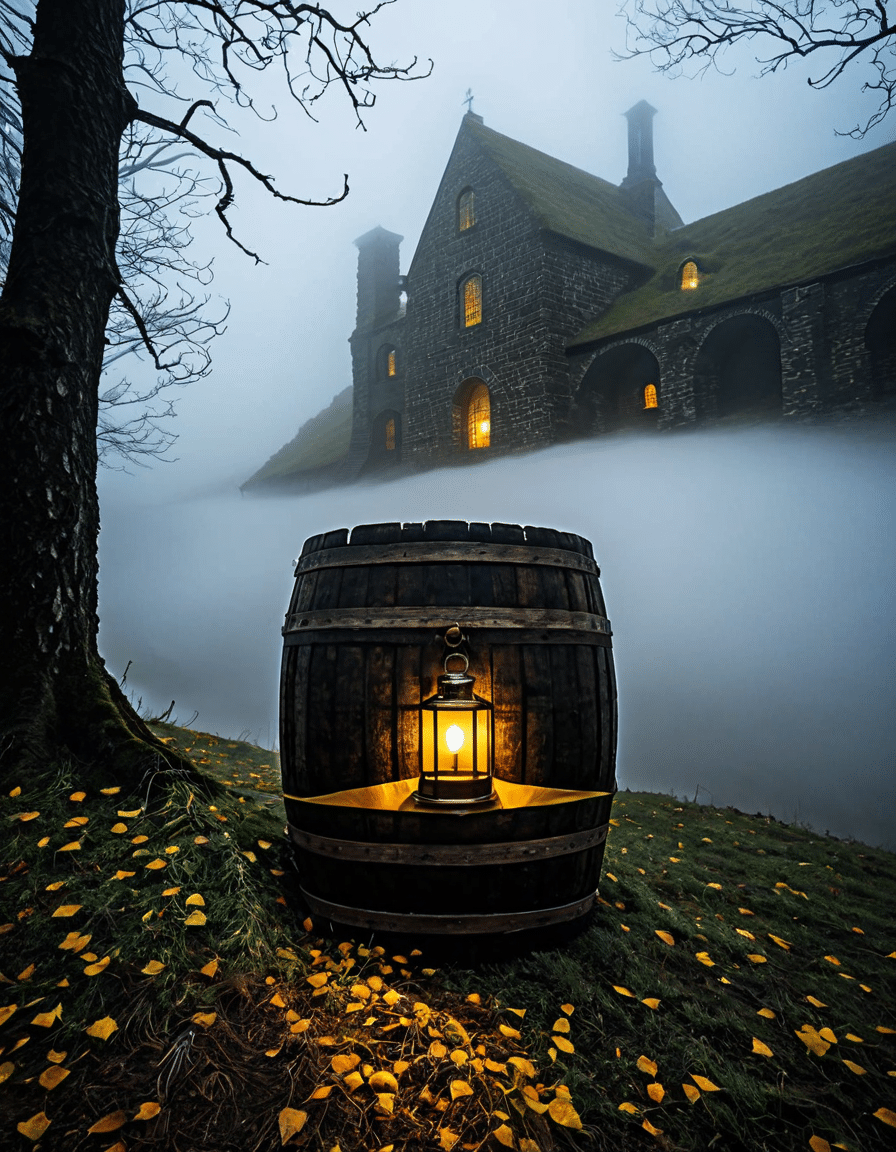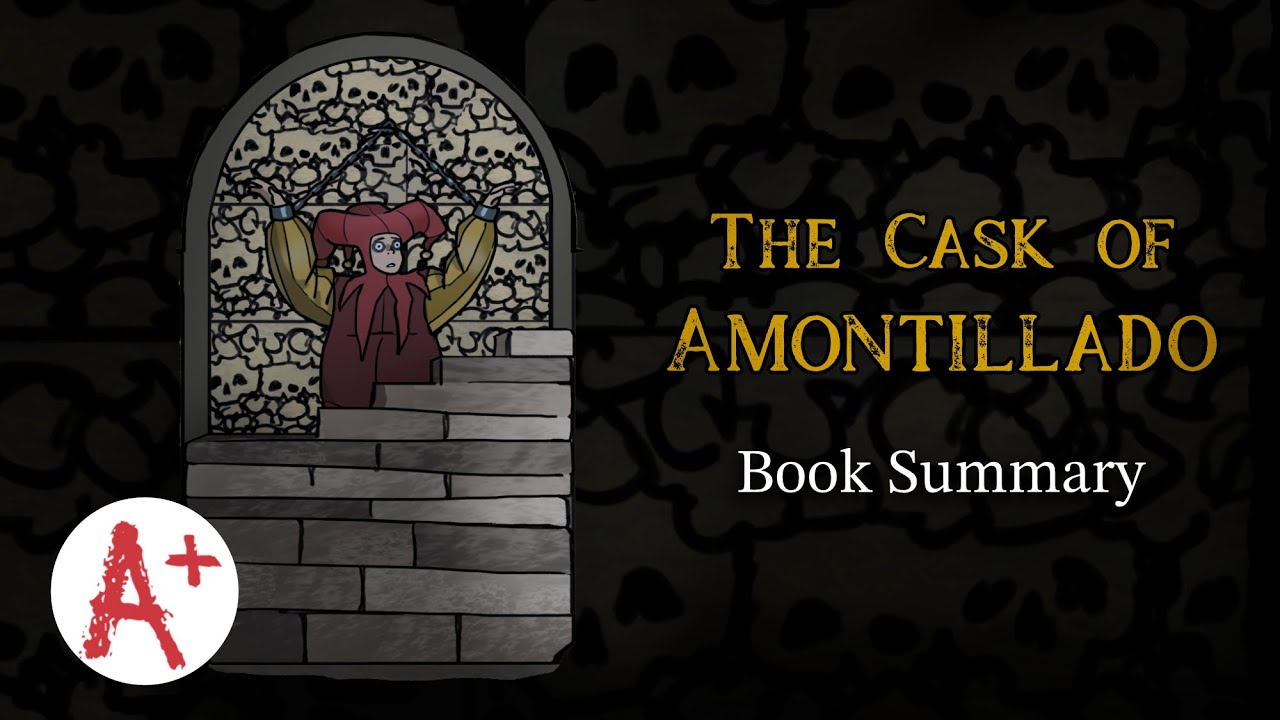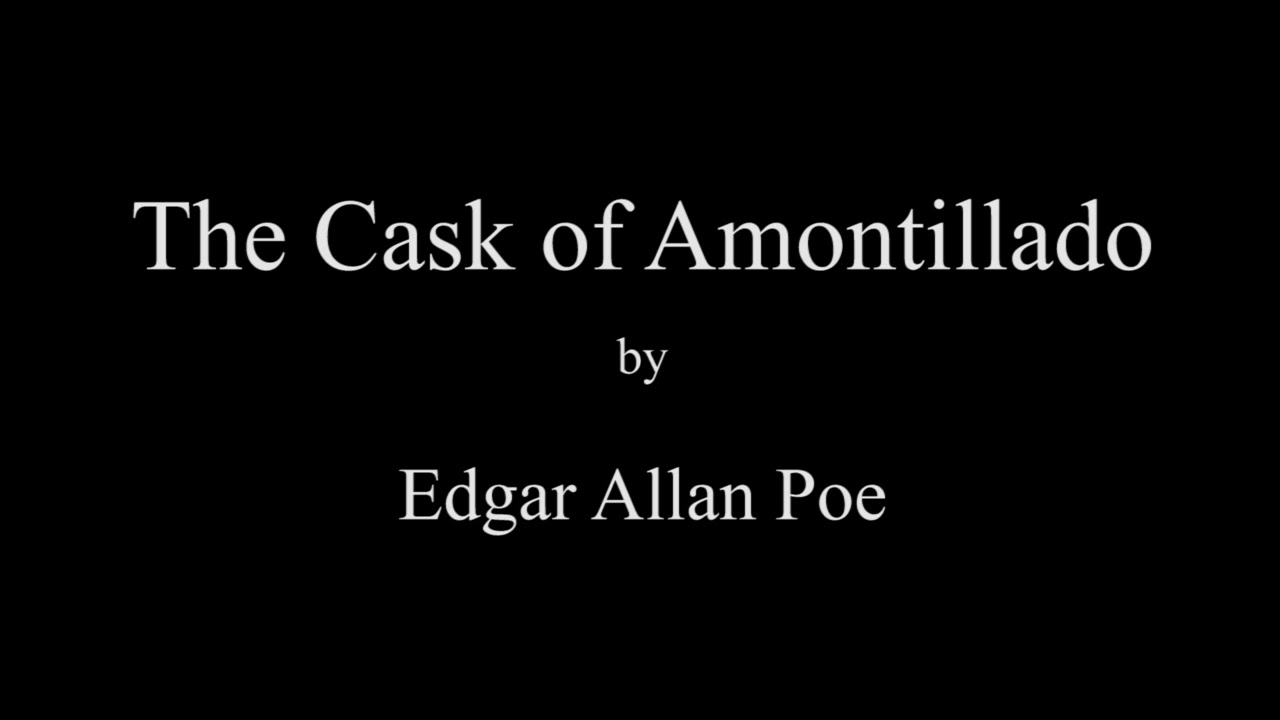
Cask Of Amontillado The Dark Secrets Behind Its Legacy
1. The Cask of Amontillado: A Glimpse into Edgar Allan Poe’s Masterpiece
Edgar Allan Poe’s short story, The Cask of Amontillado, stands as a haunting exploration of revenge, pride, and betrayal. Written in 1846, this chilling tale isn’t just about the act of revenge but also probes into the nature of humanity itself. Poe, often known for his dark and melancholic themes, draws upon his intriguing life experiences, including personal tragedies and tumultuous relationships, to craft this unforgettable narrative.
The story’s protagonist, Montresor, schemes to exact revenge on his supposed friend, Fortunato, during the festive Carnival season in Italy. This setting, characterized by masks and merriment, mirrors the deceptive appearances people maintain, hinting at the profound themes of duplicity present throughout the tale. Poe employs literary devices such as irony and foreshadowing to build suspense, drawing readers into the elaborate trap Montresor lays out, making them question the morality of his actions even as they witness the horror unfold.
From the ominous catacombs to the intoxicating allure of Amontillado, each element of the story contributes to an atmosphere thick with dread. The Cask of Amontillado resonates with readers even today, providing a chilling reminder of how pride and vengeance can shatter human connections. The emotional depth and intricacies of Poe’s characters serve to challenge our understanding of justice and morality, revealing truths about ourselves in the process.

2. Top 5 Dark Secrets Behind the Legacy of The Cask of Amontillado
2.1. The Historical Context of Revenge
Revenge has echoed through literature long before Poe put pen to paper. In The Cask of Amontillado, this theme plays out with eerie precision, particularly against the backdrop of the Carnival. Historically, the Carnival symbolizes a time of liberation from societal norms, a brief respite where people can indulge their desires hidden beneath their everyday masks. This duality encapsulates the drive behind Montresor’s vengeful plot—his personal grievances are subtly woven into the broader context of societal turmoil.
The feud between the Guelphs and Ghibellines reflects how revenge narratives have a long-standing place in human storytelling. Just like in many cultures, the story speaks of the emotional toll vengeance can take on an individual. By portraying Montresor’s meticulous planning and execution of revenge, Poe invites readers to ponder the extent to which such actions can haunt both the avenger and the wronged.
Moreover, literary scholars have noted how The Cask of Amontillado captures the essence of revenge tales across various cultures, often serving as a cautionary tale. The consequences of private grievances play out dramatically, warning the audience that indulgence in revenge often leads to catastrophic outcomes.
2.2. The Symbolism of the Amontillado: More Than Just Wine
In the story, Amontillado transcends being a mere rare wine; it symbolizes the elusive nature of wealth, social status, and human vanity. Montresor dangles this prize before Fortunato, luring him into a web spun of temptation and deceit. This reflects real-life scenarios where individuals blindly pursue status and recognition, often leading them down dark paths.
The famed Sandeman Amontillado and its competitors showcase how the quest for fine wines parallels Fortunato’s tragic fate. Just as Fortunato falls victim to his pride and love for wine, many today find themselves entangled in the allure of material possessions, thinking they’re invincible and above reproach. Poe crafts this fascinating dynamic, shining a light on the superficial nature of pride.
In essence, Amontillado serves as a cautionary metaphor for the risks associated with ambition and the sometimes-uncanny consequences of boasting about wealth. The compelling narrative reminds us that the pursuit of status can lead one into precarious situations, exposing them to unforeseen dangers.
2.3. The Role of the Setting: From Carnival to Catacombs
The contrast between the lively Carnival and the dark catacombs profoundly enhances The Cask of Amontillado’s impact. Carnival represents the euphoric masquerade of life, a celebration where everyone hides their true selves behind masks. Yet, beneath this vibrant exterior lies a chilling reality. When Montresor leads Fortunato deeper into the catacombs, the tone shifts dramatically, revealing the protagonist’s sinister intentions hidden beneath the festive backdrop.
As they descend into the damp catacombs, readers sense a metaphorical journey into the subconscious. This descent uncovers the darker facets of Montresor’s psyche and mirrors the fears and desires lurking beneath the surface of human consciousness. Real-world locales like the Paris Catacombs serve as visual complements to this imagery, highlighting how settings can become characters in their own right.
The physical descent into darkness reflects our willingness to confront or deny our inner demons. Poe artfully manipulates the setting to evoke a sense of dread, turning what should be a celebration into a chilling backdrop for a horrifying act of betrayal.
2.4. Montresor’s Psychological Complex: The Mind of a Murderer
Montresor stands out as a rich psychological study, offering insights into the motives of an unreliable narrator. His claims that “no one can imagine” the reasoning behind his actions draw intriguing parallels to modern antihero narratives. Montresor’s thought process becomes a focal point for readers to analyze as they grapple with morally ambiguous characters.
Psychological studies suggest that revenge-driven behavior often correlates with perceived slights and personal grievances. Research by Patricia T. Holland reveals how feelings of narcissism influence such behaviors, allowing readers to connect Montresor’s cold rationality back to contemporary understandings of human behavior. This deeper exploration into Montresor’s psyche unlocks further dimensions in Poe’s storytelling, inviting discussions around motivations for vengeance in both fiction and reality.
Furthermore, Montresor’s actions give rise to questions about guilt, morality, and justice, drawing connections to events in today’s world. Whether in literature or in real-life scenarios, understanding the psychology behind revenge offers vital lessons and insights into human behavior.
2.5. The Influence on Modern Literature and Pop Culture
The legacy of The Cask of Amontillado stretches far beyond its pages, leaving an indelible mark on modern literature, film, and pop culture. Numerous adaptations and reinterpretations showcase the story’s themes, including the Animated short “Graphs.” Recognized at the Sundance Film Festival in 2024, it channels the core elements of Poe’s narrative—an exploration of obsession and vengeance.
Such influence can also be seen in contemporary television series like You, where complex characters navigate dark moral landscapes. The ambiguity embedded within The Cask of Amontillado resonates deeply, inspiring creatives to explore similar themes of obsession and psychological manipulation. It’s fascinating to observe how a story over a century old continues to spark dialogues about morality in today’s storytelling.
The essence of Poe’s work reinforces the importance of psychological depth—something that captivates modern audiences. As new adaptations emerge, the echoes of Montresor and Fortunato signal that certain narratives about human nature are timeless and relevant, challenging us to examine our motivations and the ugly truth behind revenge.

The Enduring Fascination
The dark secrets behind The Cask of Amontillado reveal profound intricacies of human behavior, layered symbolism, and masked identities that continue to provoke thought today. Edgar Allan Poe didn’t just craft a chilling tale; he presented a timeless exploration of humanity’s darker facets. By unraveling these themes, readers find that the core horror lies not only in actions taken but also in the motivations driving those actions.
Poe’s exploration of revenge, pride, and betrayal resonates strongly across generations, encouraging introspection about our morality. The haunting parallels to modern dilemmas make the narrative as relevant today as it was in the 19th century. As we dive deeper into this chilling legacy, we must recognize that these timeless truths will always remind us of the dark corners of the human experience.
Through literature, film, and most importantly, our own lives, The Cask of Amontillado serves as a constant warning: sometimes, the scariest horrors lurk not outside but within us. So the next time you indulge in a festive gathering, take a moment to remember Poe’s words, lest you too fall into the sinister shadows of your own desires.
The Dark Secrets Behind the Legacy of Cask of Amontillado
The Poe Connection
When you dive into Edgar Allan Poe’s chilling tale, “Cask of Amontillado,” you may find it fascinating to learn that the title protagonist shares a name with none other than a popular character from video game lore—Maria Robotnik. Just as Poe cleverly wove a story of revenge, the world of gaming often incorporates similar brooding themes, reminding us that betrayal and secrecy are timeless elements found across various narratives. And speaking of revenge, this story’s dark ambience sets the backdrop for many discussions, even in global spheres of entertainment, a nod to the ongoing shifts and twists in World News where stories of betrayal thrive.
Unmasking the Themes
While Poe’s story primarily revolves around themes of revenge and entombment, did you know it also captures the essence of the age-old battle between the affluent and the overlooked? Like the unsettling vibes seen in the latest celebrity gossip—take Katy Perry And Orlando blooms rollercoaster romance for example—Poe effectively illustrates how obsession can overshadow human decency. Just imagine Montresor’s chilling demeanor as he lures Fortunato into the catacombs, much like how one might become ensnared in current discussions about mortgage rates now affecting housing dreams. It’s all about highs and lows, isn’t it?
A Legacy to Ponder
The story has since inspired several adaptations and even influenced various iterations in pop culture, creating a ripple effect in filmmaking. If you’re not already familiar with Jacob Scipio, you might find his contributions to indie projects intriguing as they often mirror the classic tensions present in the tale. Additionally, many films have explored themes of betrayal akin to those found in “Cask of Amontillado, making it a ripe topic for analysis. And while we turn our attention to narratives that thrill and provoke thought, let’s not forget the captivating documentary Sweet Bobby, which reveals darker truths, much like what secrets lie within a sealed cask of fine wine.
Each layer of “Cask of Amontillado” not only keeps readers hooked but also opens the floor to countless interpretations, making it a relevant focal point in both literature and modern storytelling. Remember, as daunting as it may seem to unpack such a text, there’s treasure hidden within every word, echoing the intricate nuances seen in Karen Allen Movies that capture complex emotional arcs. Whether you’re a literature lover or just a curious mind, unraveling these themes might be the key to understanding the vast implications of Poe’s work.













